Stroke Trilogy (1. Stroke Prevention 2. First Aid 3. Rehabilitation)
Part I(A): Stroke Prevention (Congenital Cerebrovascular Disease)
Endovascular neurosurgery is a specialized field of neurosurgery, and is responsible for the stroke prevention, first aid and rehabilitation treatments. The Stroke Trilogy we are going to share with you will be focusing on these three stroke milestones. In this section, we will base on the past clinical experience and cases to elaborate the “Stroke Prevention”, and we will also talk about the general misunderstanding on Stroke Prevention and underestimated on factors that causing stroke. Stroke prevention, detailed examination and screening are critical and effective in elimination of the possibility of stroke happening.
Common misunderstandings and underestimated importance of stroke prevention:
1. Stroke cannot be completely prevented by solely rely on Doing Exercise, Healthy Diet, avoiding Three-Hypers Series and Blood Tests:
Most people may believe that stroke can be effectively prevented simply by doing exercise, healthy diet, no smoking or drinking, preventing and treating the Three-Hypers Series (i.e. Hypertension, Hyperglycemia, Hypercholesterolemia), or simply doing a simple electro-cardiogram or blood test to monitor their blood glucose and cholesterol. Then, the effectiveness of the above basic prevention will be overestimated, and the causes of stroke will also be underestimated.
We need to know that the main cause of stroke in most patients is congenital or acquired lesions in the brain or cervical blood vessels, which are the blood vessel structure issue. However, the basic prevention by Three-Hypers Series control could only reduce or slow down the pace towards the acquired vascular lesions, which will eventually occur in future. It does not address to solve the problems in congenital or acquired vascular lesions that have already occurred in our body.
We also need to know that many stroke patients may have normal blood cholesterol levels, therefore blood tests cannot be a means to detect and completely prevent strokes. It can be explained by that cholesterol is like the fatty grease in our dinner soup: the grease floats on the surface of the soup or adheres to the wall of the bowl, and cannot be extracted with a syringe placed in the soup. Similarly, cholesterol in the human body also adheres to the blood vessel wall and causes lesions, narrowing and occluding the blood vessel wall, leading to ischemic stroke. In addition, cholesterol can also attack blood vessel walls, thinning them and forming aneurysms, which can lead to hemorrhagic strokes.
Furthermore, metaphorically speaking, our human body is like a car. The government set out the requirements that the car owners must conduct inspection of their car parts every year to ensure safety, so as to avoid accidents being happened due to hidden defect / malfunctioning parts. Similarly, blood testing is like testing on the car’s engine oil, which cannot reflect the actual wear and tear of the car’s internal parts and safety level. For stroke prevention, simply relying on blood tests may not be sufficient. A three-dimensional (3D) cerebral angiography in order to conduct detailed screening of human body should be carried out. Under the essential physical examinations, including the three-dimensional (3D) cerebral angiography, neurosurgeons can identify congenital or acquired bombs before the symptoms came out, and then remove or deactivate the bombs before explosion to avoid strokes.
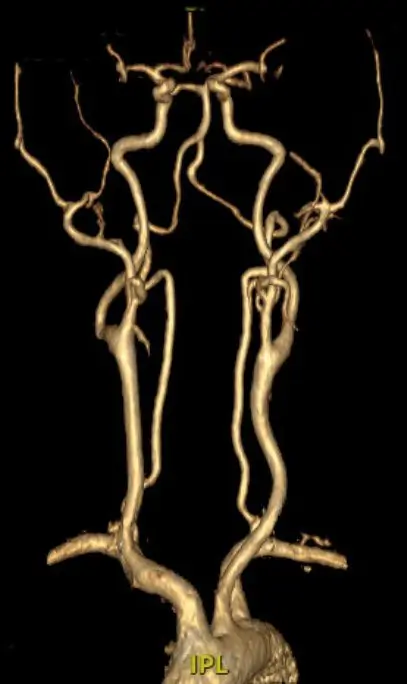
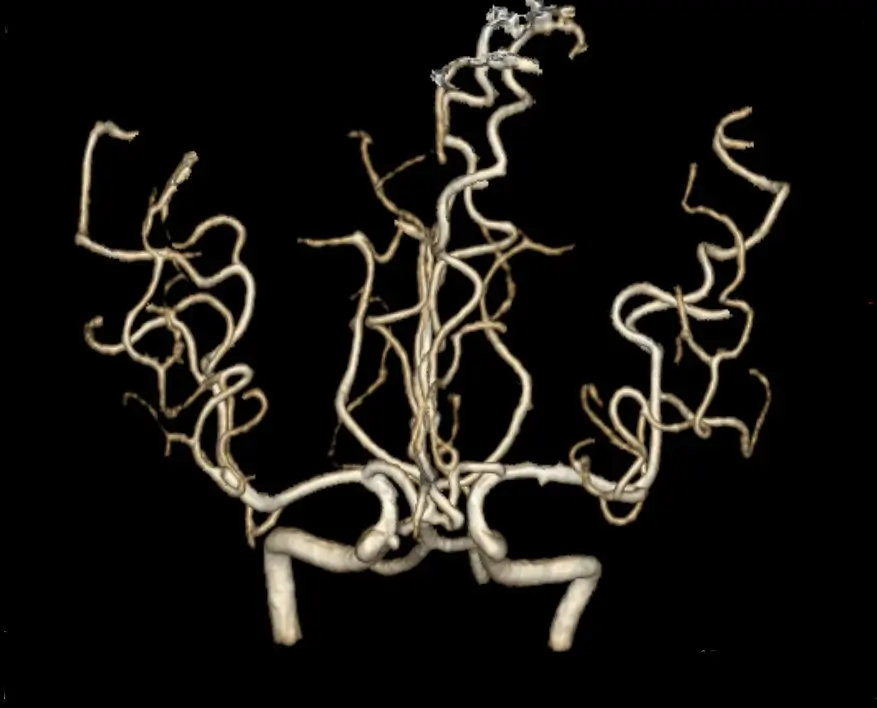
Three-dimensional (3D) Cerebral Angiography
2. Stroke has No Age Distinction
Congenital Cerebral Arteriovenous Malformation
Generally, people may believe that there would be a relationship between stroke and age, which is unture. People under any age, even children, can be potentially suffering from stroke. This is because stroke is caused by cerebrovascular disease, and each of us at any age could have a chance to suffer from congenital or acquired cerebrovascular disease. Strokes in children and teenagers can be hemorrhagic strokes caused by congenital Cerebral Arteriovenous Malformation (AVM).
Case 1:
A four-year-old boy, who have been healthy since birth without any symptoms. One day while he was shopping with his mother, he suddenly felt a severe pain in his head, and then fell into a coma. When he was sent to the hospital, it was confirmed that he had suffered a severe hemorrhagic stroke caused by rupture of a congenital Cerebral Arteriovenous Malformation. Although he was saved from the god of death with great difficulty, even after many years of treatments, the permanent damage caused by the stroke to the brain nerves could not be reversed. As of today, the boy still suffers from severe disabilities, cannot communicate with others and needs to be bedridden.
Cases 2, 3 and 4:
Three ladies aged 15, 16 and 39 respectively, who had always been healthy and no headache history, each of them suddenly suffered severe cerebral hemorrhagic stroke and severe headaches in the early, middle and late stages of pregnancy. Following with headache, all of them fell into acute coma. After emergency brain surgery and craniotomy to remove blood stasis and reduce intracranial pressure, fortunately, the 15- and 16-year-old girls, and their babies were fully recovered without any sequelae. Unfortunately, although the baby of the 39-year-old woman could survive, the woman became vegetative state and was bedridden in hospital for five years before she died.
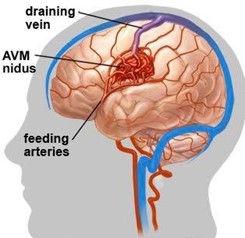
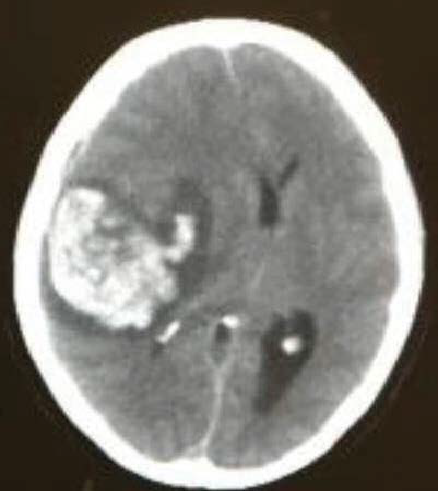
Severe hemorrhagic stroke caused by rupture of congenital cerebral Arteriovenous Malformation (AVM)
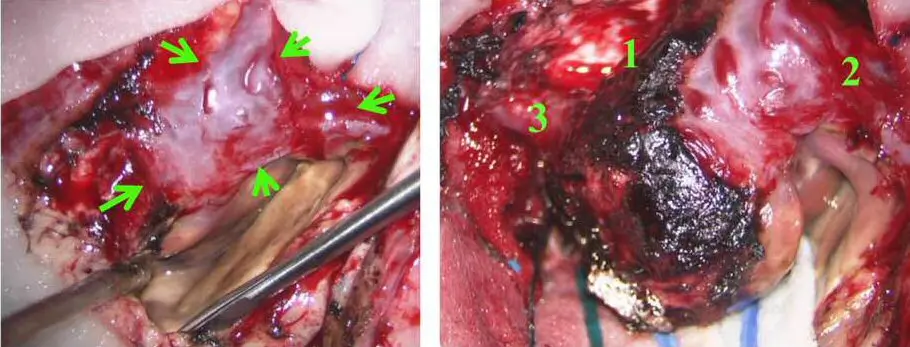
After removing the blood clot, the neurosurgeon removes the congenital Arteriovenous Malformation (AMV) under the microscope
3. Part I(A) of Stroke Trilogy - Stroke Prevention by Cerebrovascular Screening:
Cases 5 and 6:
A 16-year-old boy and a 56-year-old man, without any symptoms, both of them underwent detailed physical examinations. The three-dimensional cerebral angiography revealed that there was a congenital Cerebrovascular Arteriovenous Malformations inside their brains. After a period of observation and conservative treatment as advised by the specialist in neurosurgery, and then the minimally invasive endovascular treatment plus radiation therapy, the malformed blood vessels (nidus) were effectively cured, and the patients’ inherent bomb insider their brain were removed, reducing the risk and possibility of hemorrhagic strokes in future.


The 3D cerebral angiography revealed that there was a congenital Cerebrovascular Arteriovenous Malformations (AVM) on left side of the brain
From the above case stories, it came to our understanding that congenital cerebrovascular diseases, such as Cerebral Arteriovenous Malformation (AVM), can be screened out through detailed three-dimensional cerebral angiography. With this, neurosurgeons can diagnose and treat patients before symptoms appear, find out the congenital time bomb, remove it before explosion to avoid tragedy.
Our next topic will be Part I(B) of the Stroke Trilogy of Endovascular Neurosurgery: Screening and Treatment of Acquired Cerebrovascular Lesions.





